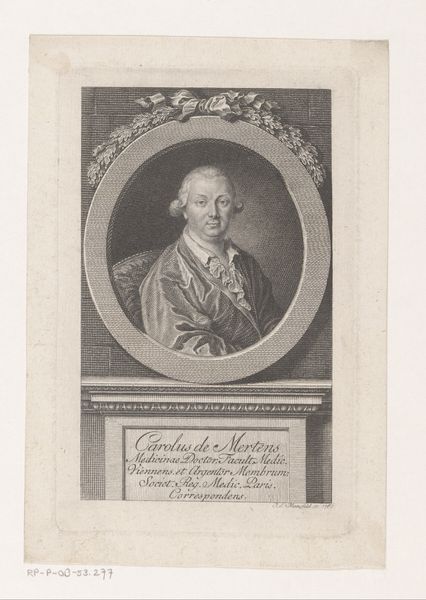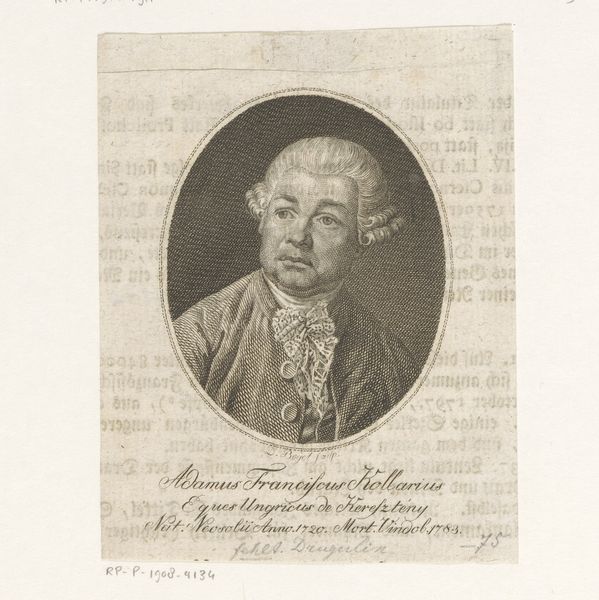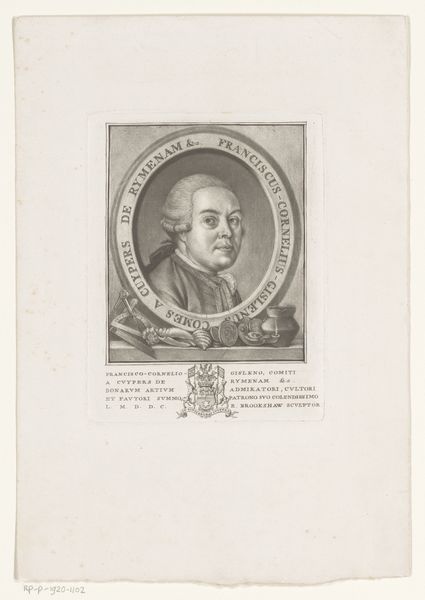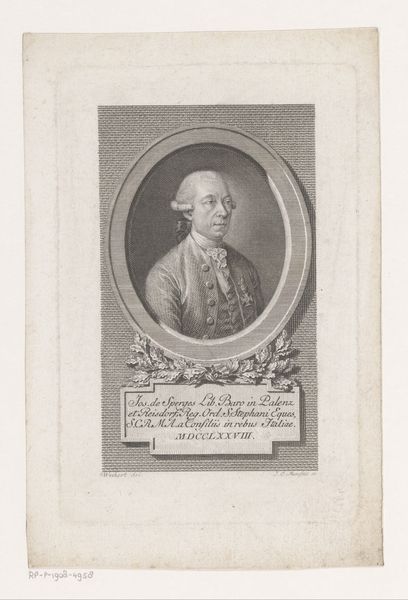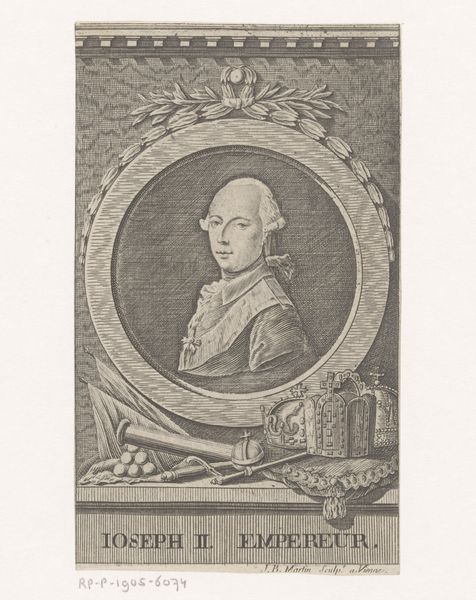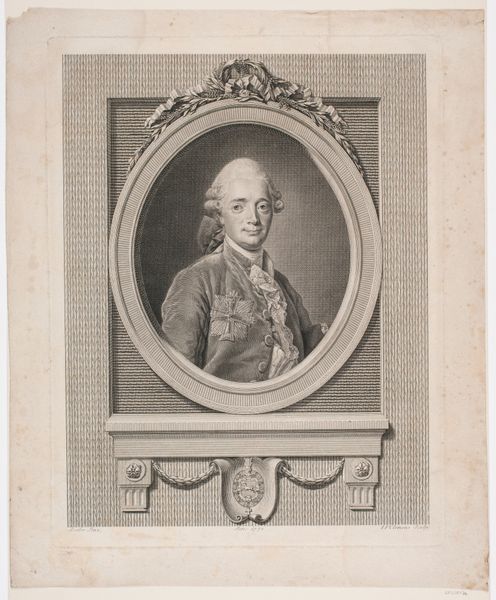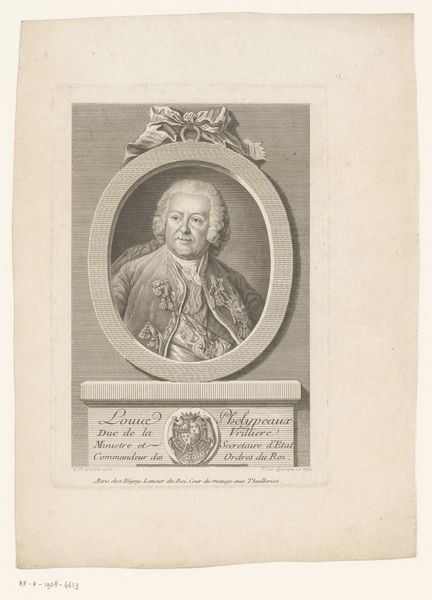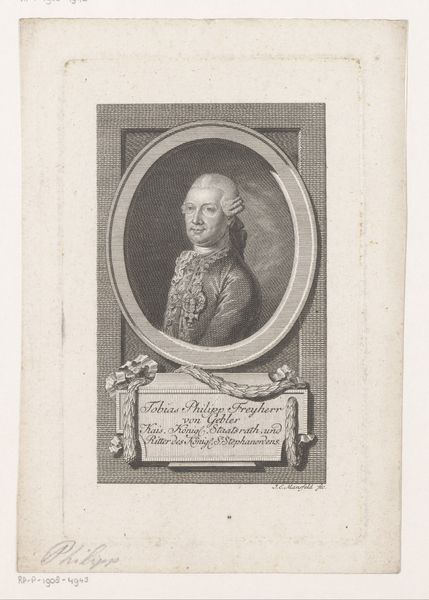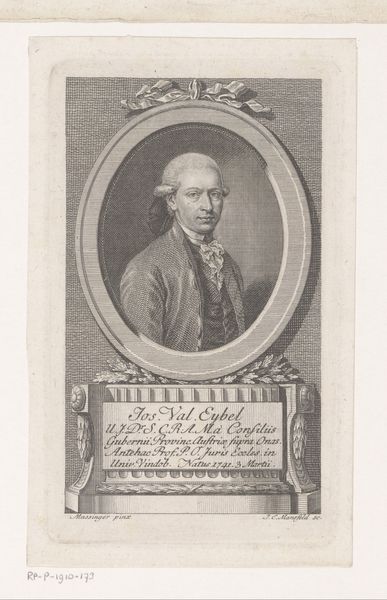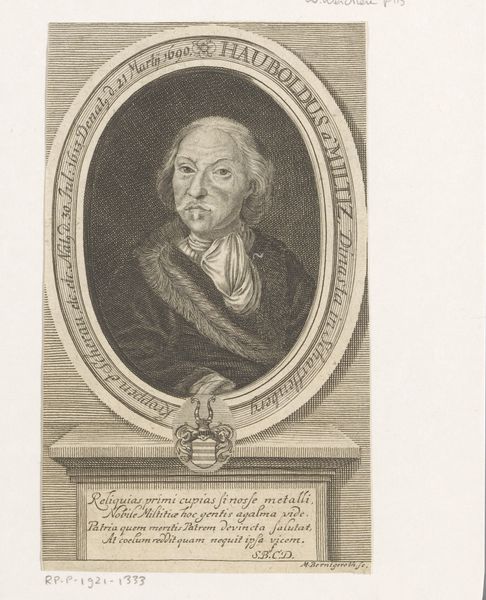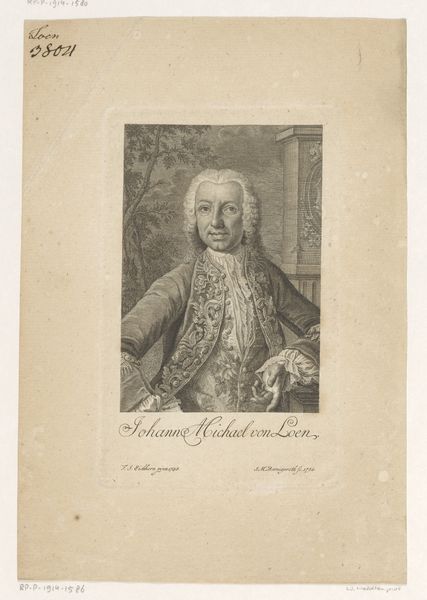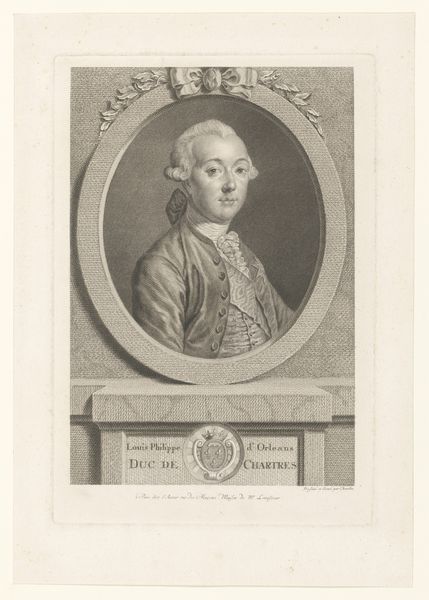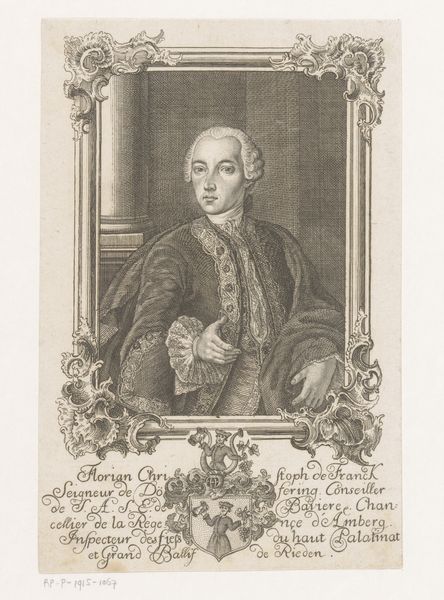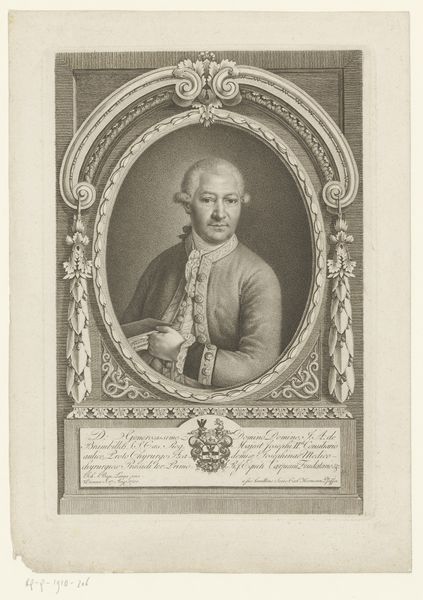
Dimensions: height 284 mm, width 194 mm
Copyright: Rijks Museum: Open Domain
Editor: Here we have Georg Joseph Coentgen's "Portret van Johann Jacob Reichard," an engraving probably made between 1753 and 1782. It’s a very formal portrait, with all the frills and curled wig of the time. What social or political messages do you read in this work? Curator: Well, firstly, let’s acknowledge that portraits during this period were often acts of power and self-affirmation. Consider the rise of the bourgeoisie and their yearning for social recognition, fueled by Enlightenment ideals yet constrained by existing class structures. Who has access to power? Who is excluded? And what visual language does the portrait employ to solidify his status in society? Editor: So, the act of having your portrait engraved and circulated was in itself a political act? Curator: Precisely! Think of the clothing: the intricate lace, the powdered wig. These aren’t merely aesthetic choices; they’re calculated displays of wealth and belonging to an elite social stratum. And, by extension, how does this affect marginalized communities and their representation – or lack thereof – during the same historical period? Editor: That makes me consider the printing press as a kind of social media for the elite back then! This one image might convey a world of information about power, status and even social mobility. Curator: Exactly! It serves as a reminder that art is never neutral. It’s always embedded within a network of power relations and social dynamics, inviting us to question the stories it tells and the silences it perpetuates. Editor: Thanks for making me look beyond the surface and towards the broader social issues at play.
Comments
No comments
Be the first to comment and join the conversation on the ultimate creative platform.
